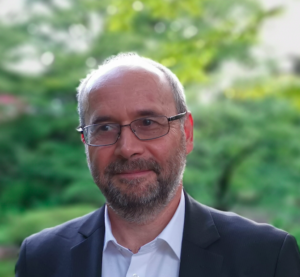About Us
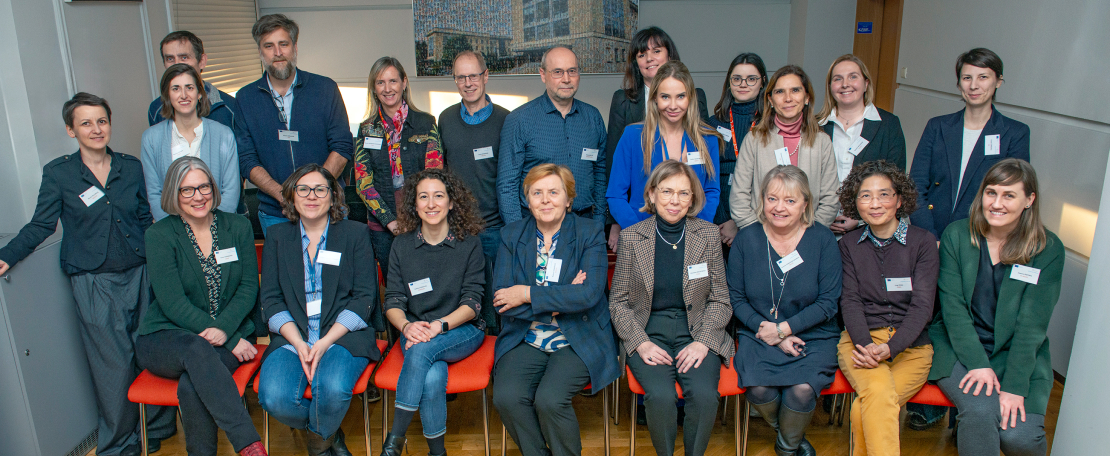
Mission
At HIT-GLIO, our heartfelt and challenging mission is to bring hope and cure to children facing deadly paediatric high-grade gliomas (pHGGs). We are dedicated our endeavour to generate a breakthrough in the understanding of disease pathology that would lead to discovery of novel and more effective treatment of these aggressive brain tumours. With the unwavering commitment, we strive to discover new therapeutic targets and create innovative treatment strategies, all with the goal to improve the survival rates, well-being and quality of life for these children and their families.
Vision
We envision a future where psediatric high-grade gliomas are no longer devastating diseases, but manageable conditions that children and their families can face with hope and assurance. Our compassionate vision is driven by a comprehensive approach that weaves together cutting-edge research, advanced technologies, and deeply patient-centered care. Understanding and exploring the disease from multiple vantage points is essential. We use novel, multi-directional approaches integrating key areas of molecular biology, neuroscience and immunology to provide insights into pHGGs. This multi-disciplinarity enables our teams to gain a true understanding of these diseases, design new treatments and improve current treatment to be more effective.
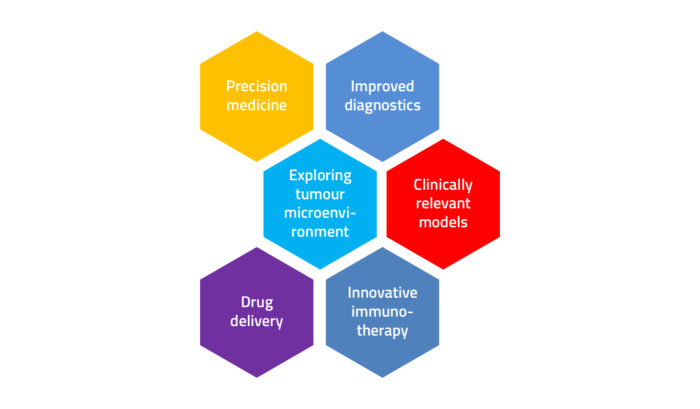
We will employ different strategic angles towards paediatric brain tumors to accelerate cures. By combining these elements, we are dedicated to making a profound difference in the lives of these courageous children, bringing them and their families a brighter and more hopeful tomorrow.
Consortium members
The HIT-GLIO Project is a research effort of many international institutions, co-directed by Dr. Bozena Kaminska and Dr.Katarzyna Leszczynska.
Nencki Institute of Experimental Biology, Polish Academy of Sciences – Poland

Lab and Specialized Research
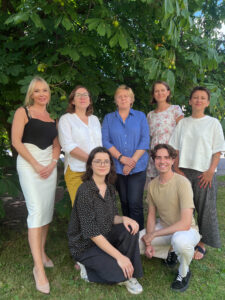
Dr Paulina Szadkowska, Dr Katarzyna Leszczyńska, Prof. Bożena Kamińska, Dr Anna Lenkiewicz, Marta Rucińska, Monika Dźwigońska, Szymon Lipiec |
HIT-GLIO project is coordinated by Prof. Bozena Kaminska and Dr. Katarzyna Leszczynska, from the Laboratory of Molecular Neurobiology at the Nencki Institute of Experimental Biology PAS in Warsaw. The Laboratory of Molecular Neurobiology is led by Prof. Bozena Kaminska, who is a world-leading expert in the identification and functional analysis of signalling pathways, transcriptional and epigenetic mechanisms controlling gene expression in microglia and glioma tumour cells [1,2,3]. Her work is seminal in describing the subpopulations of immune cells present within the tumour microenvironment of glioblastoma[4,5]. Her expertise will be critical in the detailed mapping of the immune landscape of childhood gliomas and test therapies that aim to improve the outcome of immunotherapy.
Dr Katarzyna Leszczynska is the Group Leader of the Laboratory of Tumour Hypoxia and Epigenomics and her scientific focus is in understanding tumour response to hypoxia (low oxygen), which is a major hurdle to anti-cancer therapies, and in particular, to radiotherapy [6,7]. Her recent work on the role of H3K27M oncohistone in pediatric high-grade gliomas (pHGG) emphasizes the role of point histone mutations and epigenetic regulation of these diseases [8,9]. In the HIT-GLIO project, she aims to understand how hypoxia is shaping the interactions between glioma and myeloid cells, and whether disrupting such interactions could help to target hypoxic tumour fraction and ultimately improve the response to radiotherapy.
|
Planned Research Contribution
The HIT-GLIO Team at the Nencki Institute will use the diversity of models (pHGG biopsies from patients, cerebrospinal fluid, xenografts, in vitro co-cultures) and techniques (single-cell transcriptomics and proteomics, epigenomics, clinical data) to develop strategies to enhance immunotherapy and radiotherapy (RT) response in children with these currently lethal diseases.<
Principal Investigator
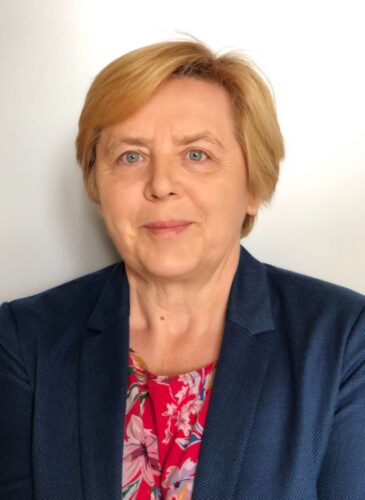 prof. Bożena Kamińska prof. Bożena Kamińska |
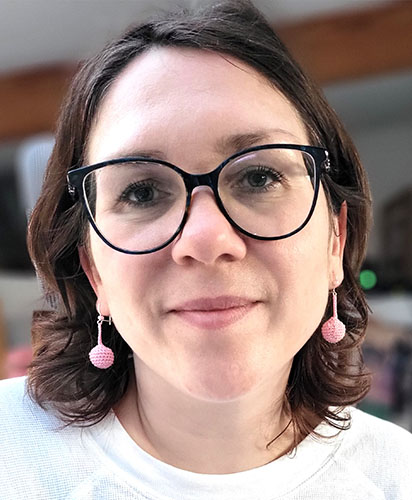 dr Katarzyna Leszczyńska dr Katarzyna Leszczyńska |
Institute Gustave Roussy – France
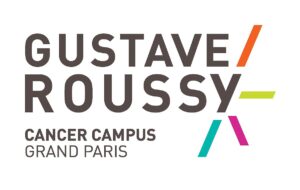
Lab and Specialized Research
The laboratory studies myeloid cell ontogeny in various disorders, including cancers. Dendritic cells (DCs), monocytes and macrophages play crucial and distinct roles in tissue homeostasis and immunity, but also contribute to a broad spectrum of pathologies and are thus attractive therapeutic targets. Potential intervention strategies aiming at manipulation of these cells will require in-depth insights of their origins and the mechanisms that govern their homeostasis and identity. The focus of the laboratory is to understand the ontogeny of DCs, monocytes and macrophages, their differentiation pathways and how their unique ontogeny dictates their immune functions. Our approach encompasses the integration of high dimensional platforms such as RNAseq, single cell transcriptome analysis, spatial single cell transcriptomic and deep immunophenotypic assessment using state of the art flow cytometry. Such high density molecular profiling at the single level and at unprecedented dimensionality and complexity will provide new insights in the biology of DC, monocyte and macrophage cell populations. Defining macrophage and DC populations on the criteria of their origin may aid our understanding of their discrete roles in tissue immunity and homeostasis, as ontogeny of DC and macrophage subsets likely underlie their functional specializations.
Planned Research Contribution
The laboratory will provide its expertise on new model of diffuse midline gliomas (DMG), one of the greatest challenges in the field of pediatric oncology. We have established neural organoids and macrophages (iMacs) from induced pluripotent stem cells (iPSC) derived from pediatric patients treated for DMG (“autologous immuno-organoids”). These “avatars” provide a unique preclinical model to which tumor cells from the same patient can be added, enabling us to better understand the crosstalk between the tumor and its immunological microenvironment, and to evaluate new immunotherapies.
Principal Investigator

Florent-Ginhoux
University of Oxford – United Kingdom

Lab and Specialized Research
Ester Hamond’s Lab main focus is the study of tumour hypoxia (low oxygen) and how this impacts the response to radiotherapy. Hypoxic cells are resistant to radiation-induced DNA damage with those in radiobiological hypoxia (<0.1% O2) being up to 2-3 times more resistant to radiation compared to those in normal conditions. Our previous work has highlighted the unique response to radiobiological hypoxia (<0.1% O2) which includes replication stress, transcriptional stress and the accumulation of unfolded proteins. Our goals are to understand the biological response to hypoxia with a view to identifying exploitable weaknesses and to determine the efficacy of drug radiation combinations (in hypoxia).
https://www.oncology.ox.ac.uk/team/ester-hammond
The Olcina lab is interested in understanding how tumours thrive in immunosuppressive microenvironments; including how they exploit innate immune pathways to their survival advantage. We use this knowledge to identify druggable tumour-specific vulnerabilities to improve tumour response and reduce treatment-induced toxicity. Our work is at the intersection between dissection of molecular mechanisms and translational work. We aim to harness this knowledge for improved treatment and biomarker selection.
Planned Research Contribution
As part of HIT-GLIO Ester Hamond’s team, have identified a number of agents which we hypothesis will combine well with radiotherapy for the treatment of paediatric high grade gliomas (pHGGs). These agents will be tested in a range of cell models in physiologically relevant conditions both individually and in combination with radiation. These data will underpin future therapeutic strategies and inform clinical testing.Work within Dr Monica Olcina’s team will primarily focus on consolidating in vitro and in vivo brain tumour models to investigate the response to existing and novel therapy combinations. This will include determining mechanism of action through characterising changes in gene expression (RNAseq), immunophenotyping and investigating mechanisms of tumour cell death.
Principal Investigator

Ester Hammond |
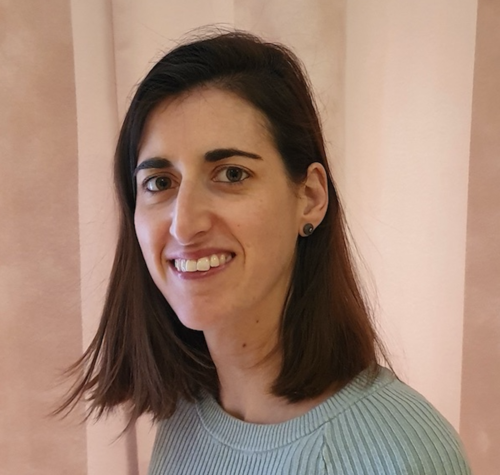
Monica Olcina |
Tel Aviv University – Israel

Lab and Specialized Research
Our laboratory aims to decipher the molecular and cellular mechanisms of tumor plasticity, understanding how tumor cells change their differentiation state to generate heterogeneity and maintain a pool of cancer stem cells or cancer-propagating cells. Additionally, we investigate the tumor microenvironment’s role in these processes, characterizing its composition at cellular and molecular levels and elucidating the cross-talk between tumor cells and non-transformed cells. In recent years, our research has focused primarily on immune-gene cell therapy, particularly CAR T cells, and pediatric brain tumors. We believe that understanding these mechanisms and interactions will facilitate the development of novel strategies to attack this aggressive type of cancer. For more information about our research, please visit our lab website: https://dinorah2908.wixsite.com/dfm-lab
Planned Research Contribution
My lab plays a pivotal role in the HIT-GLIO consortium project, leading both WP5 and WP8. In WP5, we are focused on developing syngeneic mouse models of pediatric high-grade gliomas (pHGGs) that carry specific genetic alterations, which are essential for preclinical testing of immunotherapies as well as most of the objectives described in the research proposal. In WP8, we are dedicated to the development and optimization of CAR T cell therapies for pHGGs, investigating their efficacy in combination with radiation therapy and modulation of the tumor microenvironment. Our contributions are crucial in advancing the understanding and treatment of pHGGs through innovative immunotherapeutic strategies.
Principal Investigator

Dinorah Friedmann-Morvinski
Sanquin – The Netherlands

Lab and Specialized Research
The Foskolou lab at Sanquin Research focuses on T cell metabolism and cancer immunotherapy, aiming to enhance CAR-T cell therapy against solid tumours. We investigate how hypoxia, a common feature in the tumour microenvironment, influences T cell metabolism, function, and differentiation. By employing genetic manipulation and pharmacological inhibition, we aim to optimize CAR-T cell production and improve their persistence and efficacy in vivo. Our goal is to develop innovative approaches to increase the therapeutic potential against challenging and difficult-to-treat tumours.Link: https://www.sanquin.org/research/group-leader-overview/t-cell-metabolism-and-immunotherapy/index
Planned Research Contribution
In the HIT-GLIO project the Foskolou group will contribute by creating dual-CAR T cells that target multiple targets on the paediatric glioma cells. We will also optimise the culturing conditions of CAR-T cell generation products to increase in vivo CAR-T cell persistence. Finally, we will investigate if by targeting the immunosuppressive and hypoxic tumour microenvironment, will could increase CAR-T cell infiltration, persistence and tumour cell killing.
Principal Investigator
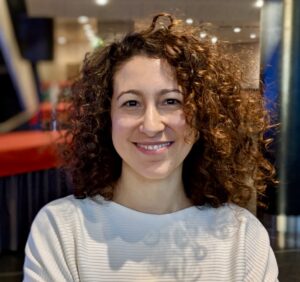
Iosifina Foskolou
McGill University – Canada
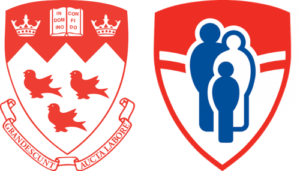
Lab and Specialized Research
Majewski’s Lab is a group specializing in computational genomics and epigenomics. Most of our research is based on analysis of high throughput DNA sequencing and genome-wide data that are sequencing-based, such as RNA-seq, ChIP-seq, HiC, and similar. Our biological interests involve genetic disease and cancer, with particular emphasis on the role of epigenetics in normal development, and its dysregulation in disease. A large part of our recent research concerns the role of oncohistones and other epigenome modifiers in paediatric gliomas.The Przybyl Lab employs multi-omic high-throughput experimental methods and bioinformatic tools to discover new therapeutic targets and new markers for diagnosis and classification of sarcomas. The goal of our research is to develop clinically applicable assays and investigate new therapeutic approaches that will improve care for patients with soft tissue tumors.Lab website: https://przybyl.lab.mcgill.ca
Planned Research Contribution
Majewski’s Lab aim within the HIT-GLIO consortium is to help design appropriate high throughput assays and assist with data analysis and interpretation. We are particularly interested in deconvolution of epigenetic changes occurring within cells of the tumor and its microenvironment. The models that are being explored within the consortium will allow fine-scale investigation, even at the single-cell level, of how the epigenetically disturbed landscape of the tumor and its microenvironment mediates oncogenic processes and responses to therapeutic interventions.Dr. Przybyl will assist with the design and execution of multi-omic data analysis for the HIT-GLIO project.
Principal Investigator

Joanna Przybyl |

Jacek Majewski |
Istituto Superiore di Sanita – Italy
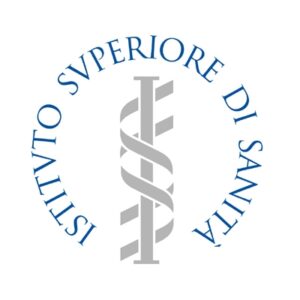
Lab and Specialized Research
The Activity of the Center for Behavioral Sciences and Mental Health aligns with the Mental Health Action Plan 2013-2030 of the World Health Organization (WHO). We aim to provide more effective leadership and governance for mental health; comprehensive, integrated mental health and social care services in community-based settings; implement strategies for promotion and prevention, and strengthen information systems, evidence, and research. Our group performs research investigating the role of lifestyle, dietary, and social factors in determining stress vulnerability and resilience and the underlying molecular and cellular mechanisms. Current research focuses on how psychosocial stress can negatively affect brain function and behavior and the implications for caregiver’s stress mental health (WWW.ISS.IT).
Planned Research Contribution
Our research group will address psychological approaches to improve quality-of-life of patients and families. In particular, we aim to describe the neuropsychological profile of patients affected by high-grade glioma (pHGG) linking it to the multi-omic examination of the tumour tissue resected during surgery or routine diagnostic biopsy, and to acquire a better understanding of their carers needs. Ultimately, we aim to deliver a manual of good clinical practices for psychological management of pHGG patients and their families.
The Children’s Memorial Health institute – Poland

Lab and Specialized Research
The Pediatric Oncogenetics Laboratory conducts integrated histological and molecular diagnostics of solid tumors in children, primarily of the CNS, using highly advanced technologies, including next-generation sequencing (NGS) and DNA methylation profile analysis. The technologies launched at the Laboratory have enabled the introduction of innovative solutions using high-scale molecular tests (in genomics as well as epigenetics), supported by solutions developed in the field of artificial intelligence, including machine learning. These are innovative, and in some respects also unique solutions, comparable to those undertaken in the best European hospitals for the diagnosis of oncological diseases and neuropathological lesions. The solutions developed in this way have contributed to the development of modern treatments based, among other things, on targeted therapy in patients treated in the Oncology Department of The Children’s Memorial Health Institute, as well as in other entities treating pediatric cancers throughout the country.InThe The Children’s Memorial Health Institute Pediatric Oncogenetics Laboratory, molecular tests relevant at all stages of the diagnostic and therapeutic process have been developed and implemented. The tests carried out in the laboratory allow the analysis of diagnostic markers (genetic markers specific for particular histological types of tumors, which are determinant for establishing the correct diagnosis), prognostic markers (molecular markers correlating with the grade of malignancy of tumors, allowing the assessment of the course of the disease and prognosis), predictive markers (allowing the effectiveness of applied therapies), and molecular markers allowing the qualification of patients for targeted therapy. The Laboratory also identifies molecular changes occurring in the genetic material derived from the peripheral blood of patients – germinal changes, which allows us to determine whether the occurrence of a given cancer resulted from the presence of a molecular defect (a group of predisposing markers), and whether the identified molecular change could be inherited (assessment of its presence in other family members allows the selection of people with a higher risk of developing cancer than the population risk and providing these people with genetic counseling, and preventive care for families at higher risk).The Laboratory’s team conducts a wide range of scientific research funded by the National Science Center, the Medical Research Agency, the Ministry of Science and Education, and the Ministry of Health, resulting in publications in prestigious foreign journals and the development of nationwide standards for molecular markers relevant to the diagnostic and therapeutic management of solid tumors in children.Website: https://czd.pl/strony/dzialalnosc-kliniczna/pracownie/pracownia-onkogenetyki-dzieciecej
Planned Research Contribution
The Children’s Memorial Health Institute (IPCZD) is the National Reference Centre for Polish paediatric brain tumour patients providing medical multidisciplinary care for patients from all regions of Poland. Each year over 80 children are diagnosed with CNS tumours in IPCZD. The IPCZDs’ team members were contributors to TCGA projects and participated in genomic findings laying grounds for the new classification of brain tumours. Several experimental clinical studies in paediatric glioma therapy are carried out by IPCZD. IPCZD is a part of PaedCan-ERN initiative, which is a European Reference Network for Paediatric Cancer (https://paedcan.ern-net.eu/). This network oversees all issues related to paediatric tumours and being a part of it IPCZD will be able to broadcast our project’s results to the clinicians dealing with pHGGs Europe-wide.Website: https://czd.pl/
Principal Investigator
 Wiesława Grajkowska Wiesława Grajkowska |
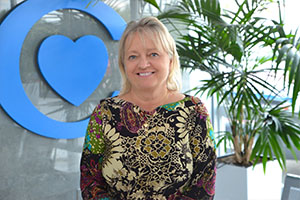 Bożenna Dembowska-Bagińska Bożenna Dembowska-Bagińska |
 Joanna Trubicka Joanna Trubicka |
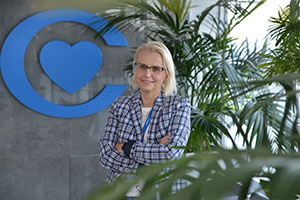 Katarzyna Kotulska-Jóźwiak Katarzyna Kotulska-Jóźwiak |
GeneXplain Gmbh

Lab and Specialized Research
GeneXplain GmbH is one of the globally recognized providers of leading bioinformatics, systems biology, and cheminformatics databases, software, and services. GeneXplain’s expertise is deeply rooted in bioinformatics methodology and knowledgebase infrastructure, which has been continuously developed for over three decades. The company’s focus is on modeling the molecular mechanisms of gene regulation, cellular signal transduction, and human diseases, with the aim of progressively building an integrative research and prediction platform for 21st-century medicine.Website: https://genexplain.com
Planned Research Contribution
GeneXplain contributes to the HIT-GLIO consortium by providing an established and proven bioinformatics infrastructure that encompasses a comprehensive collection of analysis workflows, a unique and outstanding biomedical knowledgebase, as well as experienced data analysis and modeling expertise. With these tools, GeneXplain aims to help identify molecular drug targets within the complex interaction network between tumor cells and the tumor microenvironment. The company will employ neural networks and deep learning-based analysis to distinguish disease-induced cellular phenotypes of immune cells, model cell interactions, and search for potential therapeutic targets. GeneXplain’s proprietary methodology will further be used to model gene regulatory networks and identify master regulators in multi-omic analyses of gene expression, epigenetic profiles, and pathways, revealing specific candidates in the context of tumor-microglia interactions.
Centre Nationale de Recherche Scientifique – France
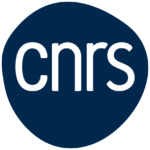
Lab and Specialized Research
The National Centre for Scientific Research (CNRS) is a public research organization in France under the administrative supervision of the French Ministry of Higher Education and Research. CNRS is the main fundamental research organization in Europe largely involved in national, European and international projects covering all fields of knowledge and recognized for its excellence with 21 Nobel price and 12 Field medals. CNRS has 32000 employees in more than 1,200 services with a 3.4 billion euros budget and more than 1100 research units spread throughout the world.Centre Interdisciplinaire de Nanoscience de Marseille (CINaM) is one of CNRS joint research units with Aix-Marseille University (AMU), and specialized in multidisciplinary study on nanoscience and nanomaterials. The team of Dr Ling PENG in CINaM is specialized in design, synthesis and characterization of functional dendrimer nanosystems for the delivery of drugs, nucleic acid therapeutics and imaging agents in cancer treatment and diagnosis. (https://www.cinam.univ-mrs.fr/cinam/en/team/immf/b-and-b/)
Planned Research Contribution
In the HIT-GLIO project, the team of Dr Ling PENG will be responsible for the design, synthesis and characterization of the self-assembling dendrimer nanosystems for the delivery of drugs, nucleic acid therapeutics and imaging agents in Glioblastoma treatment. Specifically, various amphiphilic dendrimers bearing distinct hydrophilic and hydrophobic entities will be synthesized and characterized for their chemical structure and compositional integrity using NMR, HRMS and HPLC. Their self-assembling properties to form nanomicelles, to encapsulate therapeutic agents as well as to decorate ligand for BBB crossing and glioblastoma targeting will be investigated for stability, size, morphology and surface charge, as well as drug loading and encapsulation efficiency using TEM, DLS, fluorescence spectroscopy and HPLC. The most promising candidates will be identified and selected for in vitro and in vivo functional studies by other partners in this project consortium.
Partners and sponsors
This project has received funding from the European Union’s HORIZON EUROPE programme under Grant Agreement No. 101136835.



